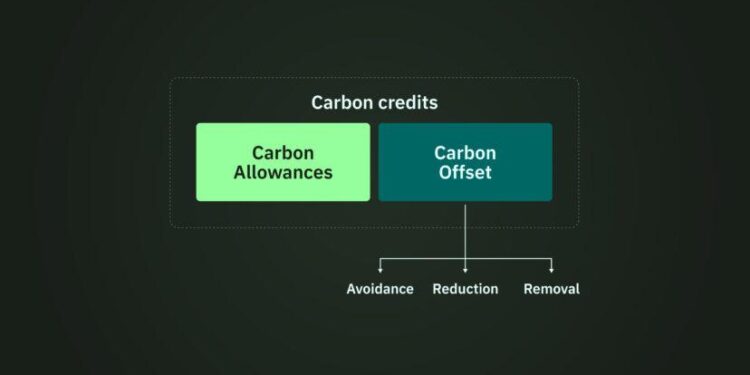Microsoft has taken a significant step in its commitment to sustainability by purchasing 2.95 million tons of carbon removal credits from a carbon capture and storage (CCS) project based in Denmark. The landmark deal highlights the tech giant’s ongoing efforts to reduce its carbon footprint and advance climate action within the data center industry. By investing in this large-scale CCS initiative, Microsoft aims to offset emissions and support innovative technologies that capture and permanently store CO‚āā, reinforcing its goal to become carbon negative by 2030. This move underscores the growing importance of carbon removal strategies as businesses seek scalable solutions to combat climate change.
Microsoft Expands Carbon Offset Portfolio with Major Purchase from Danish CCS Project
In a significant move underscoring its commitment to sustainability, Microsoft has secured 2.95 million tons of carbon removal credits from a cutting-edge Carbon Capture and Storage (CCS) project based in Denmark. This acquisition marks one of the largest deals of its kind, reinforcing Microsoft’s strategy to achieve carbon negativity by 2030. The CCS project, leveraging advanced technology to trap and permanently sequester CO2, is expected to play a critical role in balancing out emissions from Microsoft’s global operations, including its expansive network of data centers.
Key highlights of the partnership include:
- Innovative Technology: The Danish CCS initiative uses pioneering methods for capturing carbon dioxide directly from industrial sources.
- Long-Term Impact: The project targets permanent storage of captured carbon beneath the North Sea, ensuring environmental integrity.
- Scalability: This deal paves the way for expanding carbon removal markets, enabling other corporations to invest in sustainable solutions.
| Parameter | Detail |
|---|---|
| Carbon Credits Purchased | 2.95 million tons |
| Project Location | Denmark, North Sea Basin |
| Technology | Carbon Capture & Storage (CCS) |
| Contract Duration | 10 Years |
Detailed Analysis of Carbon Removal Impact on Data Center Emissions
Microsoft’s recent acquisition of 2.95 million tons of carbon removal credits through a CCS project in Denmark marks a strategic leap in mitigating data center emissions. By investing in carbon capture and storage technologies, the company addresses one of the most challenging aspects of sustainability in the tech industry: the substantial CO2 footprint generated by sprawling, energy-intensive data centers. This move not only offsets emissions but also sets a precedent for large-scale corporate responsibility, demonstrating the viability of carbon removal as an essential tool in achieving net-zero goals.
Key impacts of this initiative on data center emissions include:
- Long-term carbon sequestration: The captured carbon is securely stored underground, ensuring permanent removal from the atmosphere.
- Reduced reliance on offsets: By directly investing in technology-driven removal, reliance on less certain or temporary offset projects decreases.
- Enhanced transparency: Leveraging third-party verified credits encourages consistent reporting and accountability across the sector.
| Impact Area | Estimated Carbon Reduction | Long-Term Benefit |
|---|---|---|
| Operational Emissions | ~30% | Improved efficiency and lower emissions intensity |
| Carbon Removal | 2.95 million tons/year | Permanent atmospheric CO2 reduction |
| Supply Chain | 15% | Supports cleaner energy sourcing and materials |
Recommendations for Tech Companies Investing in Large Scale Carbon Capture Initiatives
Tech giants should prioritize strategic partnerships with proven carbon capture and storage (CCS) projects to ensure maximum impact and transparency. By engaging early with developers and local authorities, companies can help scale infrastructure efficiently while fostering regulatory compliance. Investing in robust monitoring and reporting technologies alongside carbon removal efforts will also enhance credibility and provide verifiable data for stakeholders and consumers alike. Furthermore, companies can leverage these initiatives as a leverage point to innovate sustainable data center operations, reducing their overall carbon footprint beyond credit purchases.
To optimize investment outcomes, companies should consider a balanced approach between direct ownership stakes in CCS projects and purchasing removal credits. This dual strategy can accelerate deployment timelines and offer greater influence over operational best practices. Below is a brief comparison of investment approaches:
| Investment Type | Benefits | Key Challenges |
|---|---|---|
| Direct Ownership | Control over technology and operations, long-term cost savings | High upfront capital, requires specialized expertise |
| Carbon Credit Purchase | Immediate impact, lower financial risk | Less operational control, dependency on project performance |
To Conclude
Microsoft’s significant investment in carbon removal credits from the Danish CCS project underscores the growing role of technological solutions in corporate climate strategies. As industries worldwide grapple with reducing their carbon footprints, partnerships like these highlight a pragmatic approach to meeting ambitious sustainability goals. Moving forward, the effectiveness and scalability of such projects will be closely watched, as businesses seek to balance operational growth with environmental responsibility.










![Azerbaijan reaffirms support for Somalia’s sovereignty at OIC emergency meeting [PHOTOS] РAzerNews](https://europ.info/wp-content/uploads/2026/01/3037165-azerbaijan-reaffirms-support-for-somalias-sovereignty-at-oic-emergency-meeting-photos-azernews-120x86.jpg)





